The story is always the same—and always insulting. Some first-time audience member from “Up North” or a visiting actor expresses open-mouthed amazement at the quality, depth, and sheer breadth of South Florida theatre. Who knew, the newly enlightened outsider marvels, that the touristy lower half of the Sunshine State is the most under-recognized theatre hub in the country?
There’s a “looking-down-your-nose attitude from other cities,” confirms longtime Miami-area critic Christine Dolen. “Condescending people ask me, ‘theatre in Florida?’ and I just laugh.”
Banish the stereotype of Florida as a moribund haven for dinner theatre. More than 100 companies and venues are spread across the southern expanse of the peninsula, an area longer than the distance between the United States and Cuba. These theatre organizations mount everything from Sondheim to Sarah Kane, from gay-themed drama to Spanish-language fantasias. Its homegrown playwrights’ works are performed Off-Broadway, across the nation, and around the world. Guest writers praise the region as a crucible to develop new works.
Yet most people never associate Florida with anything but Miami Beach’s glittering SoBe and Palm Beach’s opulent oceanside mansions. And so South Florida theatre struggles to be noticed, even among its residents, who may be unaware that Actors’ Playhouse is next door to their boutiques in fashionable Coral Gables.
As local playwright Christopher Demos-Brown, whose American Son was exported to Massachusetts’s Barrington Stage Company this year, puts it, “When you say, ‘Name two major theatre regions outside of New York,’ we are way down on the list.”
Yet no one who’s paying attention can doubt there’s been a sea change. Theatre seasons once dominated by safe warhorses now favor world premieres, thought-provoking titles fresh from Broadway and Off-Broadway, challenging contemporary works, mildly experimental entries, and reinvigorated classics. And nary a dinner theatre in sight.
“There are no rules here—that’s the Miami model,” proposes Michael Spring, director of the Miami-Dade County Department of Cultural Affairs and a key mentor in the region’s evolution.
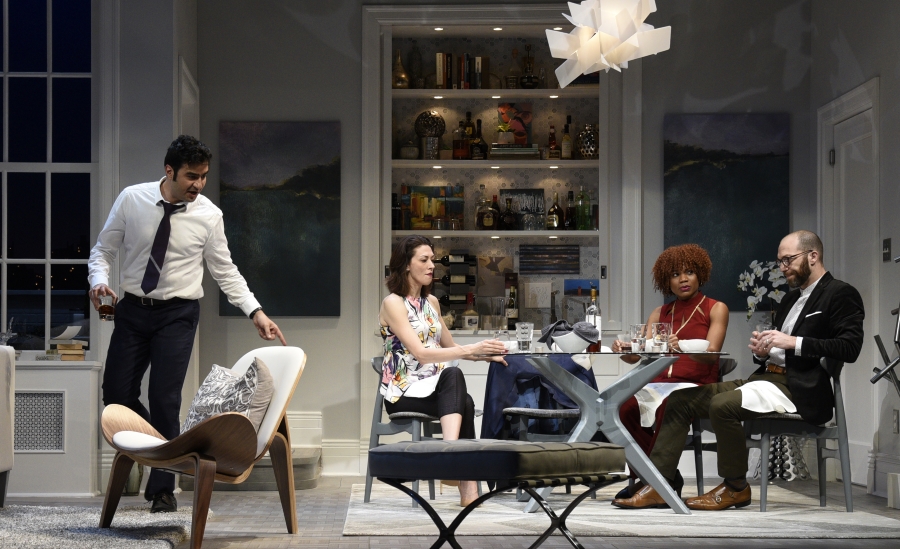
The very scope of the scene is hard to gauge, as no one quantifies theatre patronage on a regional basis. Americans for the Arts put 2015 attendance for all arts in South Florida at 29.5 million. But the atypically high-performing Maltz Jupiter Theatre in Palm Beach has about 7,800 subscribers for its 617-seat house. It sold 98 percent of its capacity during last season’s runs of Disgraced and a re-imagined Gypsy.
The South Florida Theatre League has about 90 members, including 48 professional companies, eight community theatres, eight children’s theatres, five conservatories, and five presenting houses (with the three largest of those hosting professional resident companies). Those figures by no means include all of the companies or venues in any category—for instance, the league lists only two of several Spanish-language companies—or at least five university-based theatre programs with their own presentations. Nor does it count most of the multidisciplinary troupes dotting the region. Several area companies work under modified Equity contracts, although the Maltz is the only LORT B venue.
Another measure of change: While once the theatre season mirrored the migration of snowbirds—basically, Thanksgiving to Passover—today most theatres produce remunerative fare straight through the summer doldrums.
A key element is geography. “South Florida theatre” commonly refers to a 110-mile corridor wedged between the Atlantic and the Everglades. It starts in Jupiter in northern Palm Beach County, snakes south through Fort Lauderdale in Broward County, and ends in Cutler Ridge in southern Miami-Dade County. There is no single theatre district, but venues are peppered through the region, with virtually no theatres closer than a mile and a half from each other.
This distance inhibits the professional interplay among some theatres’ leaders and discourages older audiences from travelling at night to see other theatres’ work. But busy actors spend so much time on the road that almost every Equity contract has a gasoline allowance.
Each county has its own character: Miami-Dade has a slightly younger, more diverse crowd open to edgier works and visual spectacle that transcends language. Palm Beach audiences are wealthy, older, mostly white, philanthropic, split between those seeking comfort food and those seeking thought-provoking productions of classics or new work. Broward, meanwhile, is in such flux that its audience has no easily definable profile.
The fare is far broader than might be expected. GableStage snaps up the latest Broadway and Off-Broadway dramas. Island City Stage, in gay-friendly Wilton Manors, focuses on works by, about, and for the LGBT community, including premieres like Michael McKeever’s Daniel’s Husband, which moved Off-Broadway last season. M Ensemble in Miami, the oldest black company in the state, has started its second pass through the complete works of August Wilson.
Zoetic Stage, based at the Arsht Center presenting venue in Miami, is a collective of artists premiering the work of founding members McKeever and Demos-Brown as well as dramas by Doug Wright and Amy Herzog.
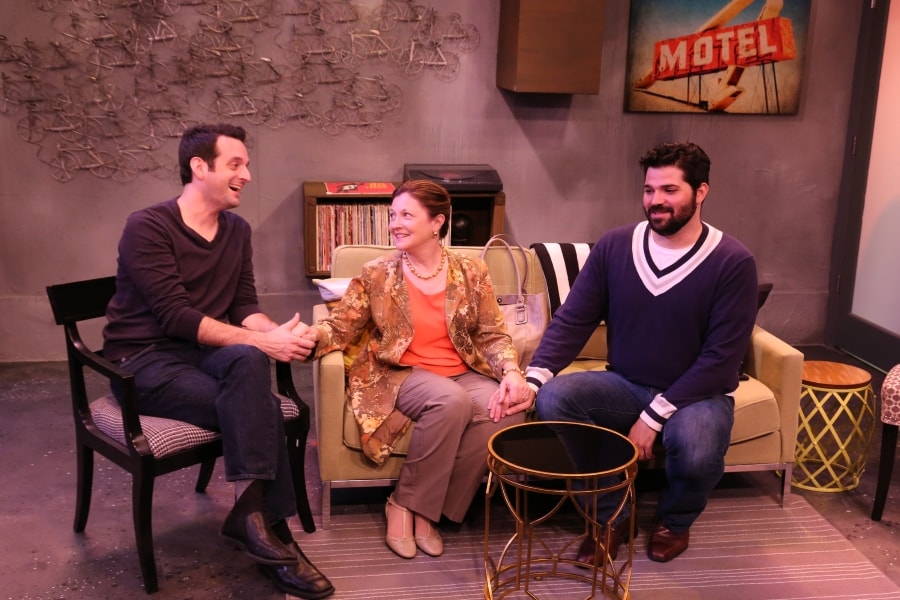
One primary lesson local artists have learned: the power of finding and staying slavishly loyal to your niche. The most successful companies over the past decade and a half have a clearly identifiable mission. Palm Beach Dramaworks’s producing artistic director, William Hayes, is fond of noting that when the theatre offers lighter fare than its usual Albee or O’Neill, audiences berate them with, “I can see that at another theatre.”
The secret formula: Identify a hungry, underserved audience and hang on economically while letting people know you exist.
“It’s a huge challenge to find new, younger audiences,” concedes Nicole Stodard, founder of two-year-old Thinking Cap Theatre in Fort Lauderdale, which presents works by Jen Silverman, Will Eno, and Lucas Hnath. “A lot of the time what we are dealing with is a thin slice of the existing theatregoing audience that is willing to take a chance on an unknown play by an unknown playwright or an experimental take on a known quantity. But they keep coming back, so that’s the beauty of it.” As one patron of the company quipped, “I’ve never seen a normal play here.”
Perhaps most noteworthy is the explosion of new work. In 2017, it is difficult to find a South Florida theatre that does not have at least one world premiere or regional premiere on its schedule, thus supporting local playwrights as well as national writers, like Deborah Zoe Laufer.
“The fact that I had my first world premiere in Miami in 1996 was a gift,” says Mc-Keever, who has subsequently been produced across Europe and Russia. “It was something strange and unheard of, like finding a unicorn! Now, it’s almost commonplace.”
The trend got rolling in 1987 when Lou Tyrrell co-founded Florida Stage. That Palm Beach County company, which became a nationally noted launching pad for first and second productions, made a deal with its subscribers: consistently high quality in exchange for a season of still-gestating plays by writers they may not have heard of (although later the company collaborated with Israel Horovitz, William Mastrosimone, Nilo Cruz, Lee Blessing, and Steven Dietz).
When Florida Stage closed in 2011, Tyrrell downsized to Arts Garage in Delray Beach, then created Theatre Lab, a small professional company at Florida Atlantic University in Boca Raton with the same mission. A similar commitment from the recently closed New Theatre in Miami led to the commissioning and world premiere of Nilo Cruz’s Pulitzer-winning Anna in the Tropics in 2002.
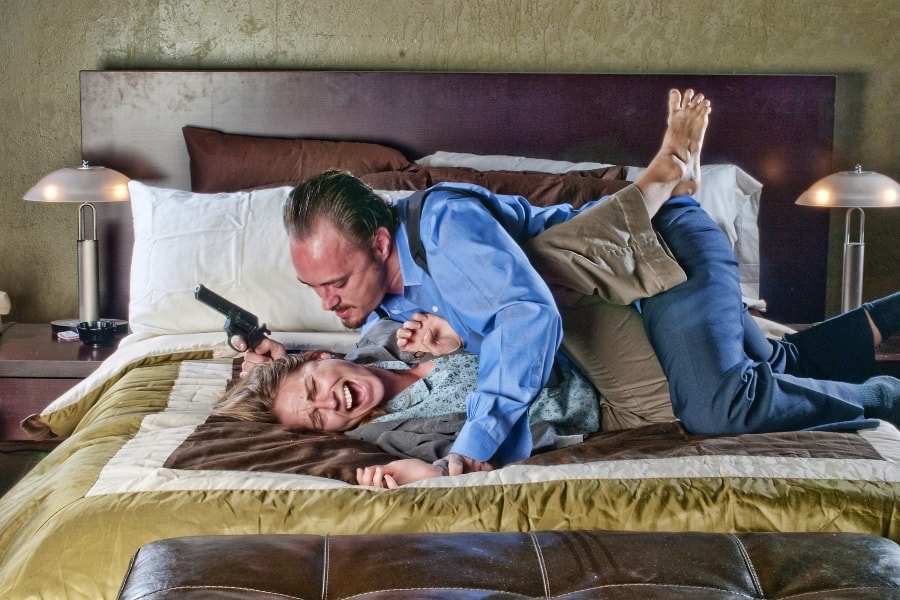
(Photo by George Schiavone)
It’s a far cry from the times when early audiences were dominated by snowbirds and retirees with disposable income, hailing from metro areas and bringing a lifetime habit of attending theatre.
In those days, most venues offered mainstream musicals and innocuous plays—yes, sometimes sandwiched between fried chicken and skirt steak. But in the late 1970s through early 1990s, producers realized that many potential patrons were used to more challenging work “Up North.” Mainstream venues like the Caldwell Theatre in Boca Raton began peppering schedules with vibrant, contemporary plays, like Bent. And newly arrived artistic directors saw the region as a blank canvas upon which they could develop niche audiences that matched their personal vision, says Tyrrell.
An emblematic shift occurred during the 1999-2000 season, when the respected GableStage inside Coral Gables’ Biltmore Hotel completed a genre U-turn by producing Ben Elton’s Popcorn and Tracy Letts’s Killer Joe, followed in subsequent seasons by Edward Albee’s The Goat and Sarah Kane’s blistering Blasted. The theatre hemorrhaged some of its earlier audience but gained a strong new base hungry for substance.
Similarly, says Dramaworks’ Hayes, “We learned quickly not to underestimate our audience.” It sought patrons wanting ’night, Mother, Seascape, and Who’s Afraid of Virginia Woolf?, and caught the national attention of Wall Street Journal critic Terry Teachout in 2008 when Hayes staged Ionesco’s The Chairs.
Today the busloads of condo dwellers are supplemented by older Boomers and empty-nesters who favor revues memorializing the Beach Boys rather than Gershwin, and prefer Tom Stoppard to Neil Simon. There’s still a senior segment craving familiar titles mounted conventionally at place like the Wick Theatre in Boca Raton. For its part, the Maltz chooses to reinvent the old chestnuts, as was the case with director Marcia Milgrom Dodge’s reimagined Hello, Dolly!.
But the sought-after younger audiences (here that means under 60) demand either brand-new works or “reflections of who you see yourself as a person” in today’s world, according to Andie Arthur, executive director of the South Florida Theatre League.
Surprisingly, though, theatres haven’t made significant inroads in attracting the fruits of the region’s leading industry: tourism. Producers put flyers in hotel lobbies and work with concierges, but few people think of spending their nights at the theatre after a day at the beach or the golf course. Most tourism departments advertise their region’s draws around the country, but culture is rarely mentioned, theatre almost never.
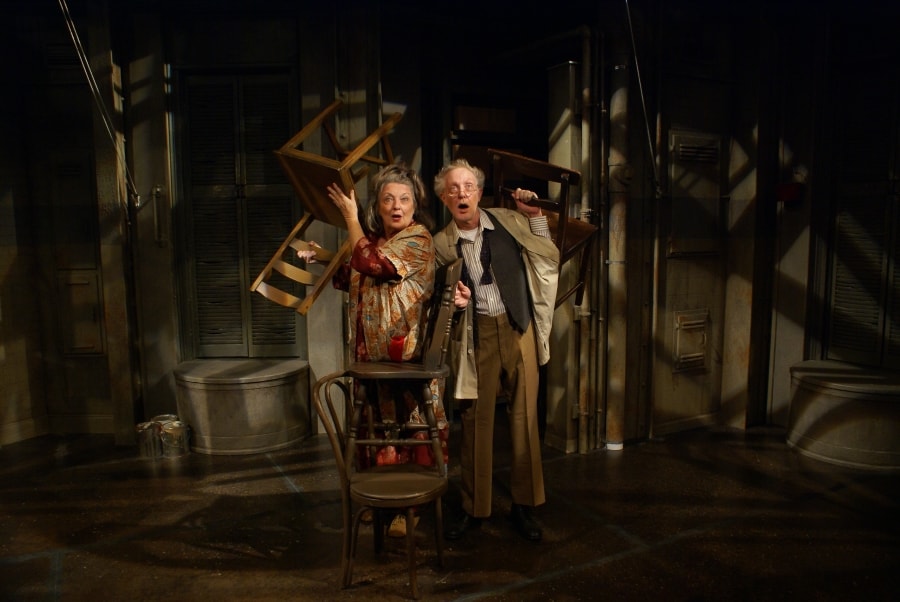
With the lure of significant minority populations, companies desperately struggle to attract diverse audiences. This is especially pronounced in Miami-Dade, where 67 percent of the residents identify as Hispanic.
“We are not in any way, shape, or form a homogeneous community,” declares Michael Spring. “We say this lovingly—we are a segregated community. That’s going to be the case until the community comes together like first- and second-generation immigrant communities ultimately do” as they become bilingual, he noted.
The theatre community has striven for decades to appeal to these underserved audiences. M Ensemble was created in 1971 with staffers writing their own scripts, due to a paucity of African-American playwrights. But its reach into its own neighborhoods, let alone the white community, has ebbed and flowed. Without Miami-Dade County government grants, M would have folded years ago, says co-founder Shirley Richardson.
Mario Ernesto Sánchez founded Teatro Avante in 1979, one of several Spanish-speaking companies, and he has hosted an International Hispanic Theatre Festival with global participation for 32 years. Newer companies seeking younger Hispanic audiences include Microtheater Miami, which presents multiple short plays simultaneously in shipping containers downtown. Arca Images hired Nilo Cruz as artistic director to unveil imagistic new plays and classic works with English supertitles.
But primarily English-speaking theatres have failed to attract those audiences. “We have to figure out how to crack that nut for this theatre to survive,” says David Arisco, artistic director of Actors’ Playhouse, a tent-pole house for mainstream work that has labored for decades to attract a diverse audience.
No one stops trying: The new Miami New Drama company, led by Michel Hausman with the support of Moisés Kaufman, plans an Our Town this month with disparate families speaking English, Spanish, and Creole. Actors’ Playhouse plans to present Evita for four weeks in English and three weeks in Spanish. Zoetic Stage hopes to tour its premiere of ¡Fuácata! or A Latina’s Guide to Surviving the Universe, an English-language comedy sprinkled with Spanish, examining two dozen subsets of Latina women in Miami, written by artistic director Stuart Meltzer and actor Elena María García.

The talent pool is substantial yet tight-knit. South Florida, including the Keys and the area farther north near Orlando, has 573 Equity members and uncounted hundreds of nonunion actors, directors, producers, designers, and staff members. The number of artists graduating from local colleges, especially New World School of the Arts in Miami, is so large that companies like Slow Burn Theatre and MNM Productions have more applicants than slots on their audition schedules. Actors gain experience and polish starting in professional ensembles, graduating to feature roles then leading parts much more quickly than if they had left immediately for Manhattan.
Older actors work steadily locally, but use the region as a base for jobs in Orlando, Key West, Sarasota, North Carolina, Atlanta, and Washington, D.C.
Very few artists, even those working regularly, make their entire living in theatre. Many work in voiceover studios dubbing television shows into Spanish or into English. At one time, many worked in the film and television industry, but the state legislature’s decision to eliminate subsidies has decimated those opportunities.
As companies grow larger and more ambitious, they still hire locally (if only to avoid paying for housing), but they increasingly audition in New York or D.C. to find just the right performer. A running joke is that a Florida actor has to audition in New York to be considered seriously for leads by some local companies.
But perhaps the most attractive aspect of the region’s far-flung theatre scene is its overarching collegiality, despite a few contretemps rooted in jealousy over fast-rising success. “To me, the most salient quality of South Florida theatre is the sense of community,” asserts playwright Demos-Brown.
No one is blackballed for working at another theatre; companies lend each other equipment; successful artistic directors freely advise fledgling companies; curtain speeches urge patrons to see other companies’ shows running at the same time. GableStage’s producing artistic director, Joseph Adler, frequents other theatres’ productions, loans his venue to emerging companies, offers his stage to readings of works in progress, and emails his patrons about other theatres’ productions.
As Demos-Brown puts it, people “have broken bread and they know each other’s families. It’s small enough that you can’t behave badly and get away with it for very long—if you stiff people on bills, if you’re an actor who doesn’t learn her lines, everybody knows quickly and people don’t put up with it.”
Still, the region faces a dozen obstacles to continued development. Much of the business community and many power brokers simply don’t appreciate the arts’ value to economic development. Earmarked grants in a proposed Palm Beach County sales tax referendum this year were cut because influential players could not see the benefits.
Additionally, most theatre companies are founder-driven. Few have begun, or have the money to establish, a succession plan. When the artistic director of the vaunted Mosaic Theatre in Broward resigned to pursue another career, his board refused his entreaties to find a replacement.
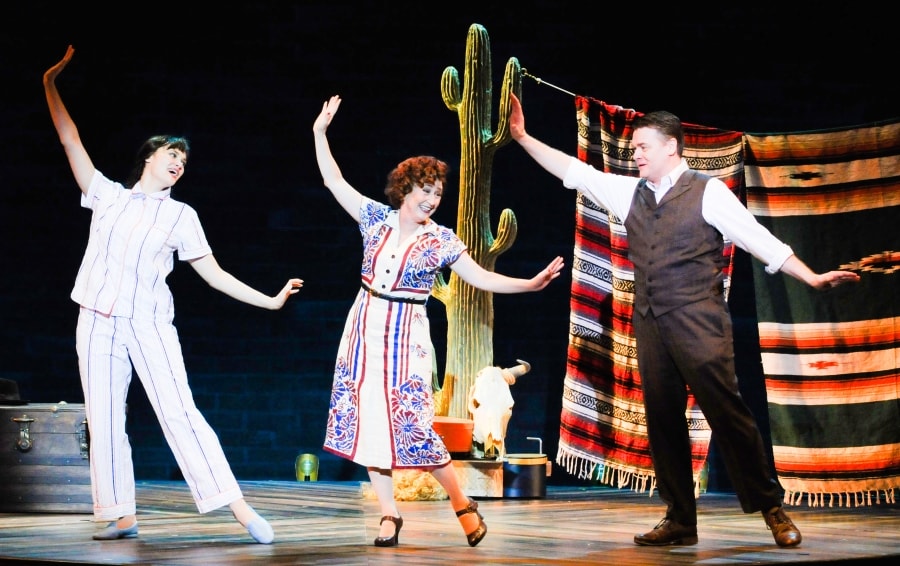
The region contains a textbook’s worth of instructive stories of success and failure. Some respected companies with track records have collapsed in the past decade, but smaller outfits have taken their place and thrived, including Slow Burn Theatre in Fort Lauderdale, which specializes in musicals they feel deserve a second chance or a fresh look (Carrie, Side Show, Next to Normal, Bonnie and Clyde).
The most crucial and frequent survival advice, here as elsewhere, is for artistic souls to be careful businesspeople. Another cautionary note: the pitfall of moving too abruptly into new genres and redefined missions. When the Caldwell Theater in Boca Raton abruptly switched to more serious, challenging work in 2011 (including critically acclaimed productions such as The Elaborate Entrance of Chad Deity), its conservative audience evaporated.
“That doesn’t mean you can’t groom an audience, but you can’t just walk in and ignore their desires—you have to work with them,” reasons Andrew Kato, the producing artistic director who eased Glengarry Glen Ross and Disgraced into the Maltz’s decidedly mainstream seasons.
Another key lesson is to become integral in the social, economic, and governmental life of the community, a technique that paid off handsomely for Island City Stage, and especially Dramaworks. After endless networking by Dramaworks’ managing director Sue Ellen Beryl, the City of West Palm Beach helped the company lease, thoroughly renovate, and ultimately buy a shuttered venue; in turn, the theatre’s success has been one element in the revitalization of downtown.
Funding remains a challenge in a state where the legislature has slashed support. Since the arts scene is relatively young, few if any companies have endowments to support them into the coming decades.
What has proved most valuable is the intense, hand-tailored, individualized courting of donors. The corporate-efficient Maltz, with an $8 million budget, benefits from year-round lobby schmoozing and skillful wooing. Last year’s fundraiser at the ultra-upscale Breakers resort netted $785,000. Kato is successful enough at relationships that when he decided that pared-back orchestrations for Gypsy lacked sufficient heft, he quickly found a donor to fund additional musicians.
Actors’ Playhouse raises the $350,000 to $475,000 it needs for each show with a proven paradigm: Executive producing director Barbara Stein woos donors with personal attention, yielding hundreds of thousands of dollars in in-kind services, from toilet paper to luxury items, to auction off at galas.
If the legislature is blind to the art form’s importance, county governments commit to numerous grants. None are as supportive as Miami-Dade’s cultural department, which provides $16.5 million in crucial grants for support and innovation for all the arts, plus support services that include guidance and seminars on business skills and social-media marketing.
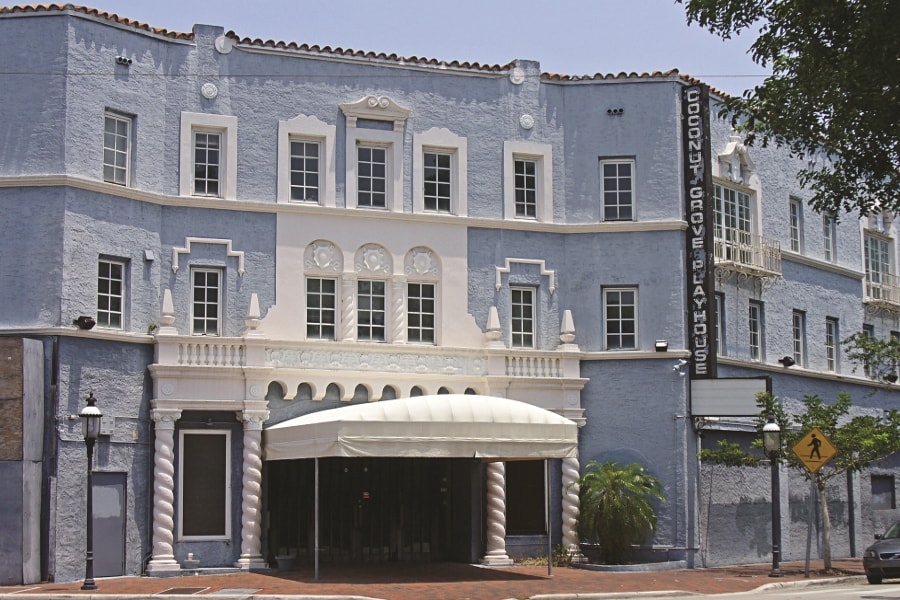
The current challenge facing the region is identifying how to develop further, gain a national reputation, perhaps foster a Florida equivalent of Steppenwolf or Arena Stage. Scores of ideas are being explored, but the most common suggestion is to aggressively market locally developed new plays in the pipeline to New York City. That involves bringing artistic directors and producers from around the country to see local productions.
There’s also a need for artists and critics to stop praising mediocre work, several observers noted. “Just because you’re scrappy and trying hard doesn’t mean what you’re doing is good, and I think that does the audience a disservice,” believes Demos-Brown. “If you’re going to do professional theatre, you should get judged as a professional.”
The community remains optimistic about the future, because South Florida audiences demonstrate a yearning for theatre that mirrors the current zeitgeist. As Zoetic’s Meltzer puts it, “In 2017, theatre has become relevant again. The recipe and the climate of the times have really encouraged people who work in the theatre to be brave again, because what theatre artists do is call for justice when there’s injustice—they take away the blindfold.”
Plans are coalescing for a range of new play projects and new facilities. The effort many hold out most hope for is the campaign to use $20 million in Miami-Dade County-committed bond money to substantially rebuild the Coconut Grove Playhouse (all but its facade), a project expected to take three to four years. The venerable theatre, where Waiting for Godot had its U.S. premiere in 1956, shuttered in ’06, the victim of soaring debt and lax oversight by its board.
After four decades in these trenches, GableStage’s Joseph Adler is no starry-eyed naïf. But he exemplifies the region’s conviction that the theatrical quality will deepen and the professional recognition will come. “We’re still not quite there yet,” he proffers, “but we’re on our way.”
Bill Hirschman is the editor of Florida Theater On Stage.


